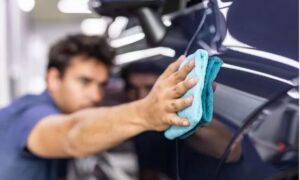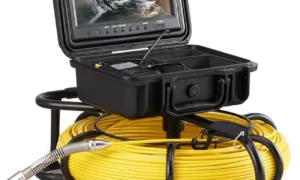We all love our pets, which means, despite everything, the practice of veterinary medicine is a thriving one. It is also one that is changing more rapidly than almost any other due to the advancements in technology.
Technological advancements are not just for humans – many of them will and have, improve the lives of pets and other animals immensely too, and the field of veterinary medicine has seen some huge leaps in the technology department in recent years.
There was a time when veterinary technology was little more than a few basic manual instruments like cholangiogram forceps and Xenon lamps. Then came things like MRI scanners and safe surgical scrubs, like those provided by Uniform Advantage and although all three of those things are still important to this day, they have been joined by a few modern friends that make diagnosing and accurately treating animals easier than it has ever been before.
Below, we’re going to discuss some of the best modern tech that is improving outcomes for much-loved animals everywhere, as well as making vets’ working lives far more productive and rewarding than ever before.
Less invasive surgical procedures
Perhaps, the biggest boon of technology in the veterinary world is the fact that it has made minimally invasive surgery more possible than very before. Veterinary surgeons can now perform a range of operations on pretty much any part of the body without causing major trauma to the animal involved. This is good news for pets because it will take far less time for them to recover and get back to their normal selves. It’s also good news for veterinarians because they are far less likely to lose patients on the operating table than in previous times.
3D printing
There was a time when people could scarcely imagine being able to print out a written document let alone an object in 3D, but the future is well and truly here, and it is helping veterinary surgeons, and the animals they treat, each and every day.
3D printing is particularly useful when it comes to performing surgery on animals because it enables veterinarians to get very accurate information on the animal they are treating’s muscles bones, something that is was not so easy to do when just X-rays and MRI scans could be used to approximate what was going on inside a pet.
Now, a veterinarian can actually take a scan of the affected area and print out an exact replica of it in all its 3D glory, which means they can create very detailed, and bespoke muscle and bone models that will enable them to carry out far more efficient targetted surgeries and treatments. They take a great deal of the guesswork out of surgery, and that can only ever mean better outcomes for the animals concerned.
Another way that 3D modeling is changing veterinary medicine for the better is by making it possible for veterinarians to design custom-fit prosthetics for animals who lose limbs. Often, finding a suitable prosthetic that is comfortable for an animal to wear can be a long, difficult and expensive prospect, but 3D printing really is changing that, just like it is in the world of human prosthetics.
Wearable devices
We know all about wearable human devices like Fitbits and Apple watched that can count how many steps you take, monitor how many calories you burn, and even take an accurate reading of your heart rate, but did you know that animal wearables are also a thing?
Most people aren’t aware of animal wearables, but they are available and they are a great tool for monitoring pet health. These animal wearables can do everything from monitoring a pet’s heart rate or body temperature to tracking their PH levels which means when a pet is sick, they can help to speed up the process of diagnosing the problem by constantly monitoring various health variables that would otherwise be difficult to track.
Microchip fracture detection
Microchip fracture detection is an amazing technology that can very quickly diagnose a fracture in an animal. You would think that this would be easy to do anyway, but if a fracture isn’t prominent it can be trickier than you might think, not least because animals don’t always show they are in pain. Not only that but by using a microchip to detect fractures, animals can be exposed to fewer X-rays over their lifetime, which is never a bad thing for anyone, animal or human.
Oral pill cameras
You may be familiar with oral pill cameras because they are now regularly used to detect various health issues in humans, including things like stomach ulcers and bowel cancers, which can be difficult to detect on scans. These days, they are also being used by vets for pretty much the same reasons.
Oral pill cameras, as you might expect, are basically tiny cameras that can be swallowed by a pet in order to obtain 360-degree images of their insides. This may seem like such a simple thing, but it really has changed veterinary medicine forever by
Making it possible to get a very clear view of what’s going on inside.
Big Data
Big Data isn’t just used by big business to spy on you and sell you more of their stuff – it can actually be a force for good too. How is it changing veterinary medicine? The more data that is collected about animal illnesses, treatments, and potential threats to pet health, the more informed the decisions veterinarians can make when it comes to treating their patients.
Evidence-based veterinary care is what we need for our animals, and Big Data has made it easier than ever to gather and analyze that evidence to obtain important insights into the nature of veterinary care – it really is that simple.
Telemedicine
Veterinary practice has gone digital, and that means that, right now, many pet owners can access many of the services their animals need online without having to travel to the vet’s surgery, which will be great news for those pets who hyperventilate every time they drive by the surgery!
Obviously, telemedicine is only ever going to be a small part of veterinary practice, but it’s good for owners to know that there is always someone on the other side of a telephone or screen with whom they can discuss various health issues with. It’s even possible to send photos of injuries and worrying growths, for example, for veterinarians to have an initial look at before an appointment is made.
Another benefit is that it encourages owners to seek veterinary advice for their pets more quickly because they can access a telemedicine service at the touch of a button without having to take time out from work or worrying about asking the vet’s time, which means that more problems are caught earlier on so that they can be treated quickly and, hopefully, have a better outcome. They’ve been especially helpful in the pandemic too!
Predictive Biomarker tools
Predictive biomarker tools are one to watch in the world of veterinary medicine. They will enable veterinarians to intervene in the treatment of animal diseases earlier than ever before, which will obviously lead to better outcomes for the animals they help.
They work by determining the probability of an animal contracting any given disease, which means you don’t even have to wait for the animal to actually have the illness before you can start treating it, whether by preventative means or other medical interventions. RenalTech is a good example of this kind of tech – they are able to, using data collected over many years, accurately predict whether a cat is likely to develop chronic kidney disease – something that is often only detected once it is too late to be effectively treated, and they can do so by looking at just six medical biomarkers, which is pretty amazing when you think about it!
Although this kind of tech is in the early stages, it is looking promising, and it will certainly be one tool to look out for if you’re interested in the future of veterinary medicine in any way at all.
Collaborative software
Veterinarians often need to collaborate with other veterinarians in the course of treating their patients because often specialist input is required, so it’s fair to say that collaborative software that makes it easy for veterinary surgeries to send electronic medical records is a real boon to the industry. Obviously, this is at the business level, rather than the medical side of the business, but it is still really important because it speeds up the process for veterinarians and their patients alike.
As you can see, there has bever been a more exciting time to be working in the veterinary medicine field. Veterinarians are typically kind, caring, and compassionate people, and these, and the many technological changes that come along after this piece is published, is making it easier for them to do the job they want to do – care for and save the lives of animals everywhere!



































